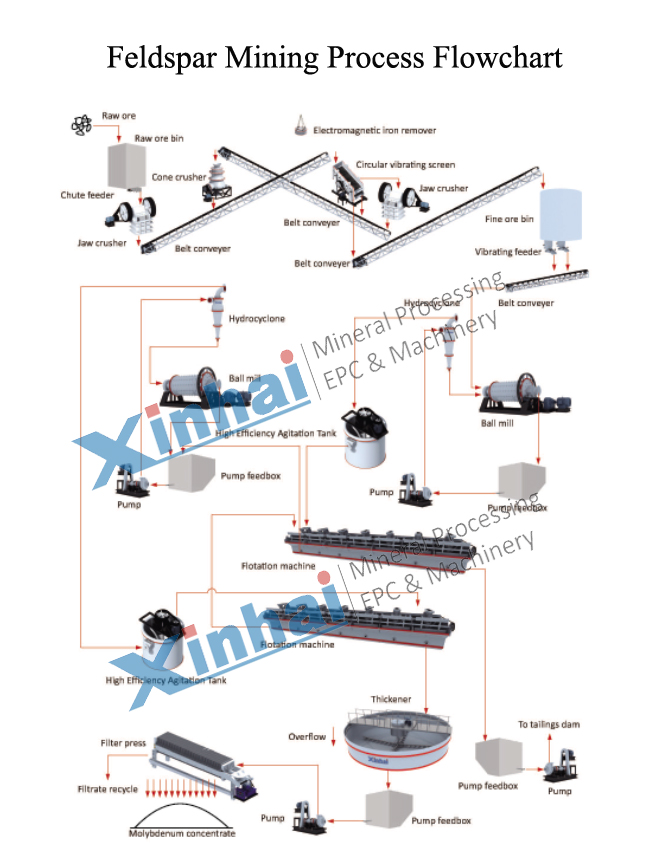Feldspar, a widely abundant group of minerals, holds significance across various industries due to its diverse applications. To harness its potential, feldspar must undergo a complex extraction and refinement process. One crucial step in this process is flotation, which enables the separation of feldspar from other minerals. In this article, we will explore the flowchart of feldspar flotation, uncovering the stages from raw ore to the final refined product.

Flotation is a widely used technique in mineral processing that exploits the differences in surface properties of minerals to achieve separation. In the case of feldspar, selective flotation is employed to separate it from accompanying minerals, such as quartz and mica. The process involves several sequential stages, each contributing to the efficient extraction of feldspar.
1. Crushing and Grinding:The feldspar ore is first extracted from the ground and then crushed and ground into fine particles. This prepares the ore for subsequent beneficiation processes.
2. Conditioning:The crushed ore is mixed with water and chemical reagents. Conditioning aims to adjust the pH level and introduce specific reagents that will make the feldspar particles hydrophobic while leaving other minerals hydrophilic.
3. Flotation:The conditioned ore is introduced into flotation cells, where air bubbles are dispersed throughout the pulp. These bubbles selectively attach to the hydrophobic feldspar particles, carrying them to the surface as a froth. The froth is then collected and processed further.
4. Froth Collection and Dewatering:The froth containing the floated feldspar is mechanically skimmed off the flotation cells. It is then dewatered to reduce moisture content, creating a concentrate of feldspar-rich material.
5. Filtration and Drying:The concentrate undergoes filtration to remove excess water. Subsequently, the filtered material is dried to obtain the final feldspar concentrate.
While feldspar flotation is a well-established process, challenges such as the presence of impurities, variations in ore composition, and changing market demands require continuous optimization. Researchers and engineers strive to improve recovery rates, enhance selectivity, and minimize the environmental impact of the process.
The refined feldspar obtained through flotation serves as a valuable raw material for various industries:
Ceramics:Feldspar is a key ingredient in ceramics, imparting strength, durability, and a glossy finish to the final products.
Glass:Feldspar is used in glass manufacturing to lower the melting temperature and improve transparency.
Coatings and Paints:Feldspar enhances the properties of coatings and paints, providing texture, opacity, and durability.
Fillers and Extenders:In industries such as plastics and rubber, feldspar acts as a filler, improving product performance.
The flowchart of feldspar flotation reveals the intricacies involved in turning raw ore into a refined product that finds applications in diverse industries. Each stage of the flotation process contributes to the successful separation of feldspar from its associated minerals, making it a valuable resource. As technology advances and challenges are met with innovative solutions, the efficiency and sustainability of feldspar flotation will continue to evolve, ensuring a steady supply of this essential mineral for various sectors.